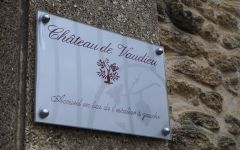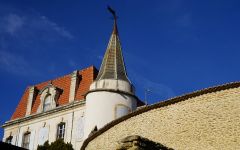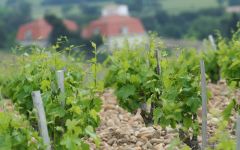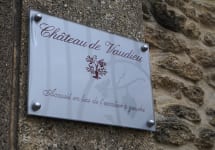Chateau de Vaudieu Chateauneuf-du-Pape Blanc 2014
-
Wine
Spectator -
Robert
Parker



Product Details
Your Rating
Somm Note
Winemaker Notes
Professional Ratings
-
Wine Spectator
Plump and inviting, with peach, nectarine and pear flavors forming the core, while wet straw, chamomile and heather notes line the finish. Features a minerally spine.
-
Robert Parker's Wine Advocate
The 2014 Châteauneuf du Pape Blanc from the team at Château de Vaudieu is a fresh, lively blend of 68% Grenache and 32% Roussanne that was raised mostly in tank, with the Roussanne and a part of the Grenache in barrel. Offering up notes of fresh pineapple, white peach, brioche and honeysuckle, drink this medium-bodied, nicely textured and classic southern Rhône white over the coming 4-5 years.
Other Vintages
2021-
Jeb
Dunnuck -
Robert
Parker -
Wine
Spectator
-
Jeb
Dunnuck
-
Jeb
Dunnuck -
Wine
Spectator
-
Wine
Spectator
-
Wine
Spectator -
Robert
Parker
-
Robert
Parker
-
Robert
Parker -
Wine
Spectator
-
Robert
Parker -
Wine
Spectator







Located about a five minute drive outside the village of Chateauneuf-du-Pape along the road which leads to Courthezon you will find Chateau de Vaudieu. It is one of three 18th century Chateaux located in the appellation, tucked into a small valley surrounded by hills and plateau. It is at the intersection of several major terroirs: sandy soils to the north, along a border it shares with Chateau Rayas (one of the best wines in Chateauneuf-du-Pape but not actually a Chateau), pale limestone and clays centered around a forested hillock, and two large plateaux of the somewhat overexposed galets. In total there are 70 hectares within one contiguous estate – something very rare in the appellation.

Full-bodied and flavorful, white Rhône blends originate from France’s Rhône Valley. Today these blends are also becoming popular in other regions. Typically some combination of Grenache Blanc, Marsanne, Roussanne and Viognier form the basis of a white Rhône blend with varying degrees of flexibility depending on the exact appellation. Somm Secret—In the Northern Rhône, blends of Marsanne and Roussanne are common but the south retains more variety. Marsanne, Roussanne as well as Bourboulenc, Clairette, Picpoul and Ugni Blanc are typical.

Famous for its full-bodied, seductive and spicy reds with flavor and aroma characteristics reminiscent of black cherry, baked raspberry, garrigue, olive tapenade, lavender and baking spice, Châteauneuf-du-Pape is the leading sub-appellation of the southern Rhône River Valley. Large pebbles resembling river rocks, called "galets" in French, dominate most of the terrain. The stones hold heat and reflect it back up to the low-lying gobelet-trained vines. Though the galets are typical, they are not prominent in every vineyard. Chateau Rayas is the most obvious deviation with very sandy soil.
According to law, eighteen grape varieties are allowed in Châteauneuf-du-Pape and most wines are blends of some mix of these. For reds, Grenache is the star player with Mourvedre and Syrah coming typically second. Others used include Cinsault, Counoise and occasionally Muscardin, Vaccarèse, Picquepoul Noir and Terret Noir.
Only about 6-7% of wine from Châteauneuf-du-Pape is white wine. Blends and single-varietal bottlings are typically based on the soft and floral Grenache Blanc but Clairette, Bourboulenc and Roussanne are grown with some significance.
The wine of Chateauneuf-du-Pape takes its name from the relocation of the papal court to Avignon. The lore says that after moving in 1309, Pope Clément V (after whom Chateau Pape-Clément in Pessac-Léognan is named) ordered that vines were planted. But it was actually his successor, John XXII, who established the vineyards. The name however, Chateauneuf-du-Pape, translated as "the pope's new castle," didn’t really stick until the 19th century.
